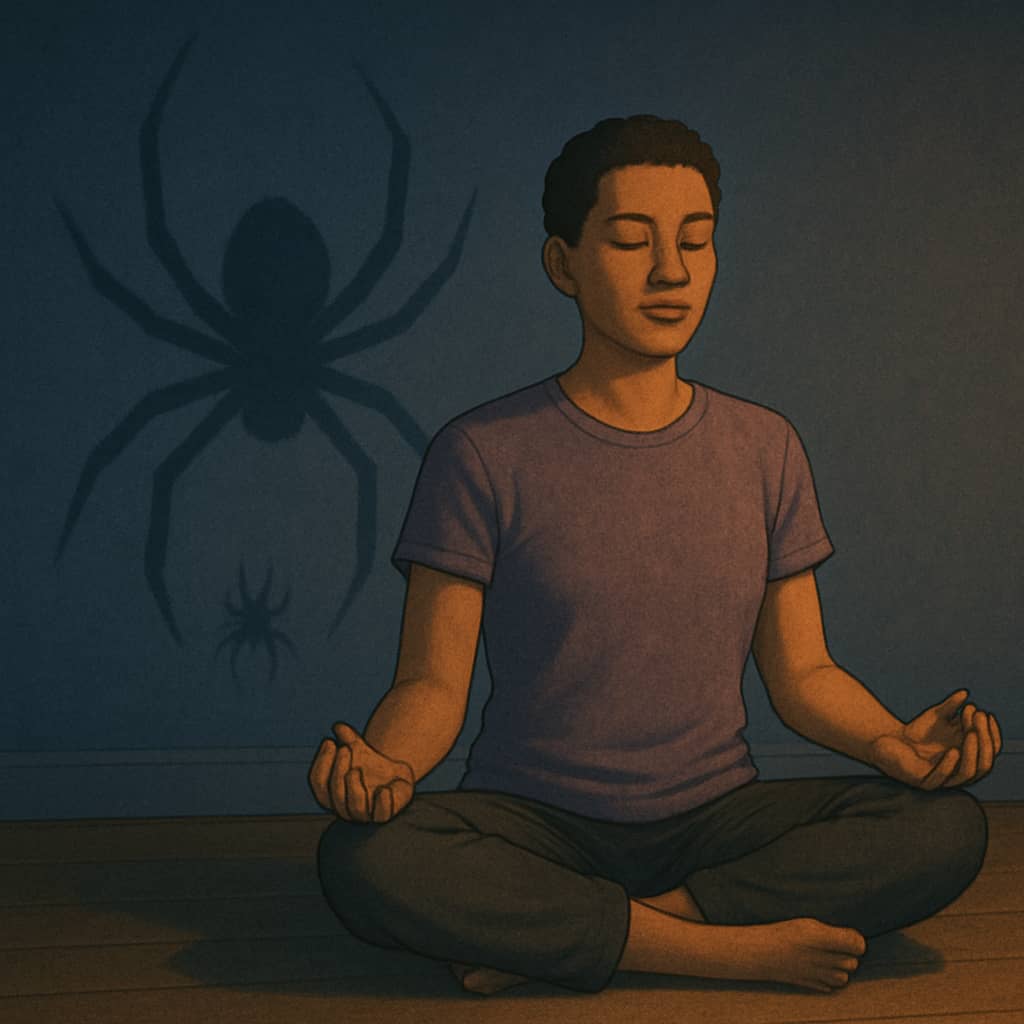The first time I froze in an elevator, I thought I was having a heart attack. My palms turned clammy, my vision narrowed to a tunnel, and all rational thought evaporated. It wasn’t until I was crouched on the floor, gasping for air between floors three and four, that I realized: this wasn’t cardiac arrest, it was my brain’s ancient survival system misfiring spectacularly. That moment began my years-long journey to understand fear’s grip and how to loosen it. Phobias hijack our rational mind, but science-backed strategies can help retrain your brain’s fear response. Uncover practical ways to regain control.
Why Fear Feels Bigger Than Logic
Fear operates on a primal level that bypasses reason entirely. I learned this when my therapist explained how my elevator panic attack wasn’t about the metal box itself, but my amygdala, the brain’s smoke detector screaming “DANGER” about a situation that was objectively safe. This explains why telling someone “There’s nothing to be afraid of” never works. The fear center doesn’t speak the language of facts; it responds to lived experience and gradual retraining.
My neighbor’s daughter developed a debilitating fear of dogs after a puppy jumped on her. No amount of statistics about gentle breeds could undo that visceral memory. What helped was systematic desensitization, I started first by looking at pictures of calm dogs, then watching them through windows, then brief visits with a therapy golden retriever. The key wasn’t rational argument but creating new, safe experiences that slowly rewrote her neural pathways.
The Hidden Triggers Behind Surface Fears
Often what we think we’re afraid of isn’t the real issue. My elevator phobia turned out to be less about confined spaces and more about losing control, a pattern that showed up in my workaholism and strained relationships. A client who feared flying eventually uncovered it wasn’t plane crashes that terrified her, but the vulnerability of being unable to escape if panic struck mid-flight.
This realization changes everything. When we stop fighting the surface symptom and address the root vulnerability, healing becomes possible. For me, it meant practicing surrender in low-stakes scenarios, letting someone else drive, trying improve classes before tackling elevators again. The fear didn’t vanish, but it lost its stranglehold.
The Body’s Role in Fear Loops
Fear isn’t just in the head, it’s a full-body experience that can become self-perpetuating. I noticed my phobia was worsened by physical habits I’d developed: holding my breath when doors closed, bracing my muscles as if for impact. These unconscious reactions sent danger signals back to my brain, creating a vicious cycle.
Breaking this required becoming a detective of my own physiology. I learned to spot early warning signs, the slight quickening of breath, the subtle tension in my shoulders and intervene with deliberate belly breathing before panic escalated. A musician friend overcame performance anxiety similarly by noticing how her fear manifested as cold hands, then wearing fingerless gloves backstage to short-circuit the physical feedback.
When Avoidance Feeds the Monster
The cruel irony of phobias is that the relief we feel from avoiding feared situations actually strengthens the fear. Every time I took the stairs to bypass my elevator terror, my brain registered it as confirmation that elevators were dangerous. This avoidance trap keeps the fear intact.
The way out isn’t plunging into the deep end but gradual exposure, what therapists call “building a fear ladder.” For my elevator phobia, the first rung was simply standing near one with the doors open. Then riding one floor with a trusted friend. Each small success created evidence my brain could use to recalibrate its threat assessment.
The Unexpected Power of Mindfulness
What finally shifted my relationship with fear wasn’t eliminating it but changing how I responded to it. Mindfulness taught me to observe panic sensations with detached curiosity ”Ah, my heart’s racing again” rather than fighting or fleeing them. This subtle mental pivot makes all the difference.
A client with severe spider phobia made breakthrough progress when she learned to notice her fear without judgment during exposure therapy. “It’s just my body doing its overprotective job,” she’d murmur as her pulse pounded. Over time, this compassionate observation created space between her and the terror.
Rewriting Fear’s Story

The most powerful tool I’ve found is narrative change. Fear thrives on vague dread ”Something bad will happen” but loses power when we specify the story. My therapist had me write out my worst-case elevator scenario (getting stuck for hours) then strategize realistic responses (call maintenance, practice breathing exercises).
This “fear script” technique works because our brains prefer bad certainty over ambiguous threat. A student terrified of public speaking improved dramatically after imagining her presentation going poorly then realizing she could survive that outcome. The fear remained, but its fangs were dulled.
References
Pittman, C. M., & Karle, E. (2015). Rewire your anxious brain: How to use the neuroscience of fear to end anxiety, panic, and worry. New Harbinger Publications.
Shapiro, F. (2024). EMDR in anxiety disorders: Rewiring the fear response. Journal of EMDR Practice and Research.
Therapy in a Nutshell. (2023, August 17). Rewiring the anxious brain.

